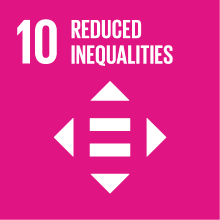SOUTH ASIAN VISUAL CULTURE
- Academic year
- 2018/2019 Syllabus of previous years
- Official course title
- STORIA VISUALE E CULTURA DELL'IMMAGINE IN SUDASIA
- Course code
- LM5340 (AF:297975 AR:159650)
- Modality
- On campus classes
- ECTS credits
- 6
- Degree level
- Master's Degree Programme (DM270)
- Educational sector code
- L-OR/16
- Period
- 2nd Semester
- Where
- VENEZIA
- Moodle
- Go to Moodle page
Contribution of the course to the overall degree programme goals
The course aims in fact to introduce students to the main artistic movements of the Indian Subcontinent between the 19th and 21st centuries, to the poetics of the main protagonists of the art scene through the analysis of their works, reflecting on their perception by critics and by the wider public.
On the one hand, this focus intends to build and consolidate the student's knowledge of modern and contemporary India and help him to relate the South Asian artistic productions with the broader global scenario, but at the same time it aims to make students understand how the visual study can constitute a crucial support in the analysis of the modern, contemporary historical, political, religious and social phenomena of the region.
Expected learning outcomes
The student will be able to understand and describe movements, tendencies and artistic dynamics between the end of the XVIII century and the opening of the XXI century and the underpinning ideologies; he will be able to recognize and analyze works of art within their historical and political context by taking into account their role in the identity-costruction processes. Furthermore he will be able to comprehend the role of the first Indian museum collections of modern and contemporary art in the promotion of artists and movements. The student will be requested to reflect on the political, social and religious implications of movements and tendencies development as on the exhibition policies of galleries and museums. He will be able to comprehend the importance of the visual production for the study of societies and historical periods, and deepen raised issues and themes in relation to the knowledges acquired during his studies; he will be also required to critically approach the theories formulated by critics and art historians.
Pre-requirements
Contents
The analysis of the European perception of Indian art will introduce the imperial design for the ‘westernization’ of the elite and will allow to trace the artistic developments from the ‘westernization’ to the construction of the Hindu national identity.
Object of closer examinations will be the artistic production during the Raj in the light of an interplay of colonialism and nationalism by addressing to those tensions, relations and contradictions that marked the advent in India of naturalism, primitivism and modernism.
Through the study of the colonial cultural institutions and of the ideologies of the nationalist intellectuals and art movements, the course will then discuss the role played by artistic patronage and artistic productions in the formation of the Indian nation and the 'Indian identity', until the early contemporary productions, the consecration of ‘Indian artists’ on the global artistic scenario and the institution of the Kochi Biennale.
Among others the course will discuss themes such as the decline of 'oriental art', the emergence of a feminine voice in Indian art, the problems attached to the definition of ‘Hindu’ or ‘Islamic’ art, problem, trends and tendencies concerning the musealization of modern and contemporary art in the Subcontinent, the biennalization of art, the so-called 'Adivasi productions' and the problems connected to their definitions.
Referral texts
- Course notes and slides
- Mitter P. (1977), Much Maligned Monster, A History of European Reactions to the Indian Art, University of Chicago Press, chapter "Orientalists, Pictoresque Travellers and Archeologists"2, pp. 105-188.
- Mitter P. (1994), Art and Nationalism in Colonial India, 1850-1922: Occidental Orientations, Cambridge University Press, Part II, chapter. 5 (Raja Ravi Varma) pp. 179-218; Part III pp. 219-339.
- Mitter P. (2007), The Triumph of Modernism, India’s Artists and the Avant-Garde 1922-1947, University of Chicago Press, Part II, "The Indian Discourse of Primitivism" pp. 29-122.; Part III, "Naturalism in the Age of Modernism", pp.123-162.
Further readings will be indicated during the course.
Complementary readings:
- Pieruccini C. (2013), Storia dell’arte dell’India e dell’Asia centrale, Vol.II . Einaudi - chapter VI "Dal British Raj all’indipendenza", pp. 180-230 + schede di approfondimento relative.
- A series of scientific writings useful to examine in depth the topics discussed in class and to carry out the assigned jobs will be indicated during the course and made available on the e-learning platform di e-learning di ateneo moodle.unive.it.
Assessment methods
Assessment will be by means of a final oral examination on the approached themes, and of the assigned works; great importance will be given to the students' attendance and active participation to lessons and discussions. The acquired knowledge, the appropriate use of the technical vocabulary, the ability to critically approach the proposed readings and themes and bring them in relation to their acquired knowledges will be assessed during the final examination.
Teaching methods
Teaching language
Further information
Type of exam
2030 Agenda for Sustainable Development Goals
This subject deals with topics related to the macro-area "Poverty and inequalities" and contributes to the achievement of one or more goals of U. N. Agenda for Sustainable Development




